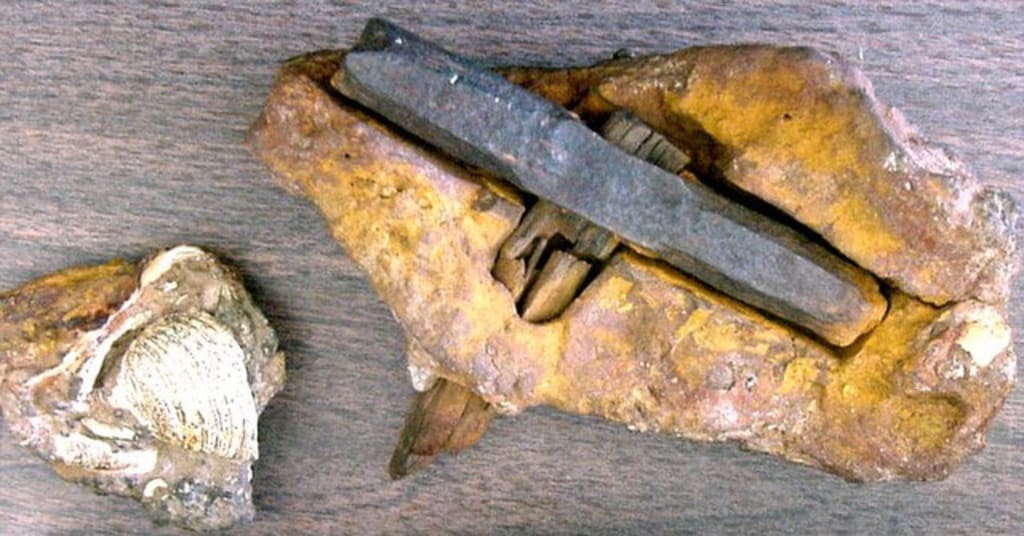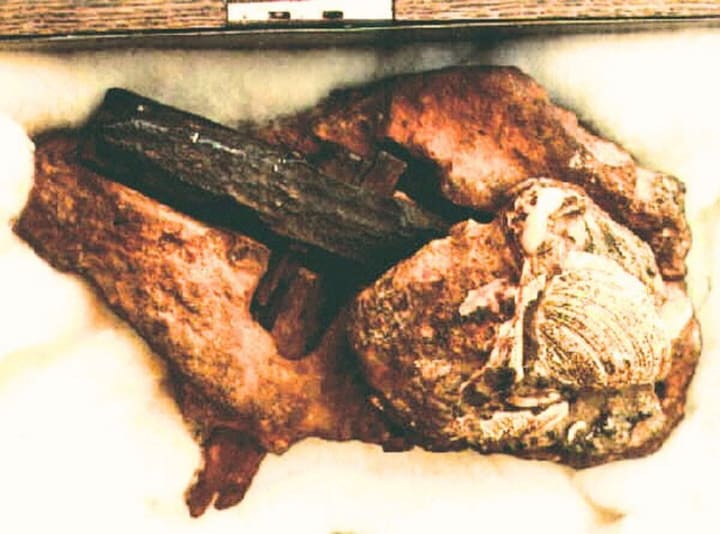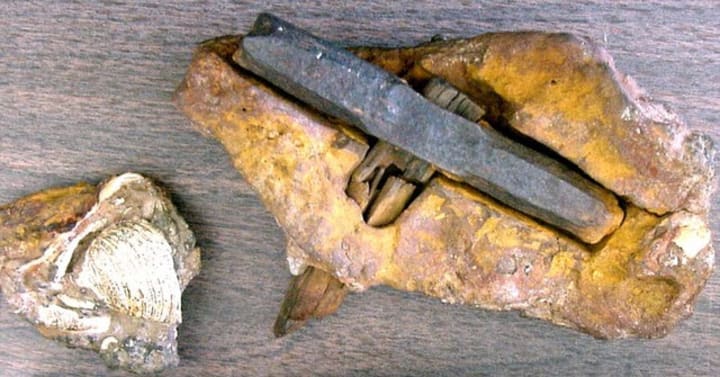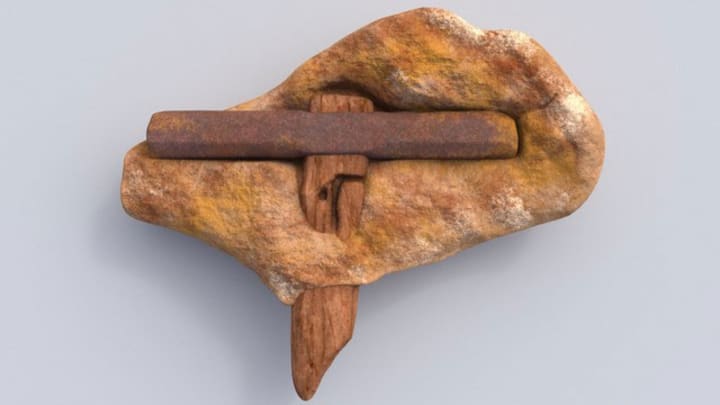London Hammer: The mystery of the ancient hammer or an elaborate hoax?
The London Hammer is a hammer believed to be 115 million years old, found in Texas, USA in 1936. This hammer has been the subject of heated debate for decades because of its unbelievable age. of it, contradicts the hypothesis of human evolution.

In the annals of strange discoveries, the "London Hammer" stands as a particularly fascinating case, and it has generated debate and interest for decades. In June 1936, Emma Zadie Hahn and her husband Max Edmond Hahn stumbled upon a strange artifact as they strolled along Red Creek in the town of London, Texas – a piece of wood protruding from what appeared to be a block of wood. old stone.
And it all started about a decade later, when their son became curious about this artifact and then decided to open the rock to discover what was inside. When the rock was opened, inside was a hammer - a hammer with an unmistakably modern look, which added further distinction to this discovery. A piece of the broken rock remained intact, showing that a mollusk shell that had not yet undergone fossilization was partially embedded within it.
But how can a seemingly modern tool be placed in a geological context that dates back millions of years? This question has prompted various theories, with some suggesting that the hammer is evidence of advanced ancient civilizations or even time travel.

The age of the hammer is estimated based on the age of the rock in which it was found. This rock is believed to be from the Cretaceous period, dating back about 115 million years. This makes the hammer a mystery, because it contradicts the hypothesis of human evolution - modern humans only appeared about 200,000 years ago.
Carl Baugh, who purchased the artifact around 1983 and publicly introduced it as the "London Artifact" when he opened his Creation Evidence Museum in 1984. Baugh asserted that the rock around the hammer belongs to the Cretaceous period - which means whoever dropped the hammer, which was designed in the 19th century style, probably dropped it while running away from a T-Rex.
Elsewhere, Baugh claims that the rock dates from the Ordovician period, which means the hammer was lost at a time when molluscs and arthropods dominated the oceans some 450 million years ago.
Regardless, Baugh sees this as proof that evolution is wrong.

The hammer was discovered by Emma Zadie Hahn and her husband Max Edmond Hahn in 1936. As they were walking along Red Creek in London, Texas, they saw a piece of wood protruding from a rock. When their son broke the rock, they were surprised to find a completely modern-looking hammer inside. Many theories have been proposed to explain the mystery of the London hammer. Some people believe that the hammer is evidence that humans appeared much earlier than we know. Others believe that the hammer is a relic of a forgotten, advanced civilization. However, the most popular theory today is that the hammer was a product of deception.
Much research has been done to determine the origin and date of the London hammer. Some research suggests that the hammer may be a modern product counterfeited to deceive people. Other studies suggest that the hammer may be an ancient relic, but its age is not as accurate as has been claimed.
In 1997, researcher Glen J. Kuban published an article in the journal Paleo in which he offered an explanation for the mystery of the London hammer. Kuban believes the hammer may have been dropped by a local person within the past few hundred years. The hammer was then encased in a block of limestone by natural processes. He quotes NCSE researcher John Cole, who has shown that dissolved minerals from ancient strata can harden around a modern item:
"This stone is real and it looks very impressive to those unfamiliar with geological processes. How could a modern artifact be trapped in Ordovician rocks? The answer is deposition itself non-Ordovician deposits. Minerals in solution may harden around an intrusive object that falls into a crack or are simply left on the ground if the parent rock (in this case Ordovician) dissolves laterally. chemical side." (Cole, 1985)

Many studies have been carried out to determine the origin and date of the hammer. Scientists used a variety of techniques, including carbon isotope analysis, spectroscopic analysis, and X-ray imaging. Although there are still many mysteries surrounding the London hammer, it is an important archaeological relic that can help us understand more about human history. The hammer is also a reminder that we still have many things we don't know about the world around us.
About the Creator
Ken aquariums
Telling stories my heart needs to tell <3 life is a journey, not a competition
If you like what you read, feel free to leave a tip,I would love some feedback
https://www.pinterest.com/Ken_Aquariums
https://s.shopee.vn/1B0pL9ZA9m
Enjoyed the story? Support the Creator.
Subscribe for free to receive all their stories in your feed. You could also pledge your support or give them a one-off tip, letting them know you appreciate their work.






Comments (1)
Very inspiring read, thanks for sharing. Please develop it further so I can have more of this interesting knowledge